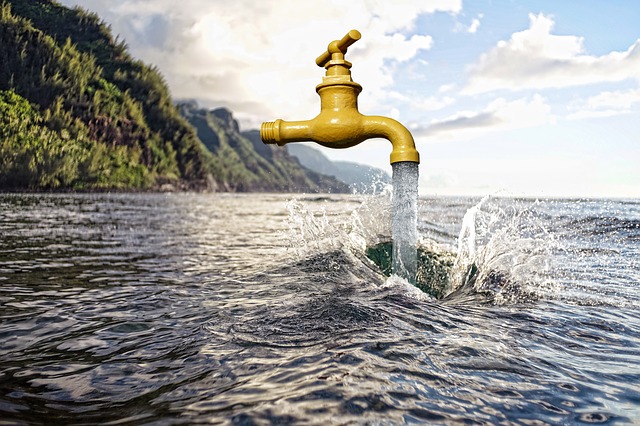
When talking about droughts and solving the problem of drinking water shortage, it’s easy to assume that we should simply figure out a way to make sea and ocean water drinkable. After all, with about 71% of our world covered by seas and oceans, it’s only logical that we should be able to make use of this ample amount of water for more than just swimming, surfing, shipping and fishing. Besides, our technology is so much advanced now. And what used to be science fiction stuff has now become real. So how come we’re still facing water shortage? Perhaps we’re just not trying hard enough. This is particularly true when considering the fact we still can’t turn seawater desalination into the perfect solution that it ought to be.
Desalination is defined as the process of removing salt (or saline) and minerals from seawater to turn it into fresh water that’s safe for human consumption. It sounds simple enough, but sadly, it’s not.
To begin with, desalination is a bit expensive. It uses up a lot of electricity. Its by-product — brine — can have a negative impact on sea water and marine life when it is not properly returned to the seas. And, the equipment used to desalinate requires fresh water as coolant. Which means to keep the equipment running properly, it has to use up a big amount of the fresh water it turns in. Pretty ironic, right?
Still, desalination remains as the most viable solution to address fresh water shortage in drought-stricken areas like California. Its price tag should be the least of its problems because with technological improvements, implementation costs should eventually go down. And this is just what Poseidon Water is counting on happening.
Poseidon Water owns Carlsbad — the largest desalination plant in the U.S. located in San Diego County, California. The plant uses a filtration system developed by Israeli firm IDE Technologies. It’s known as reverse osmosis (RO) and it works by pushing water through polypropylene membranes to remove all remaining impurities — including dissolved salts and microorganisms like viruses and bacteria — after going through an initial filtration process.
Pushing the water through those membranes is what drives the cost of the desalination process up because of the enormous amount of electricity needed to make it happen. Which is why it is imperative that new membranes that will not have to require so much energy to do its work need to be invented soon so the cost of desalination can be significantly reduced.
As reported by Wired, Poseidon Water’s vice president Scott Maloni says that, “The real game changer that people are talking about is the graphene membrane. But nothing suggests that it’s anywhere close to commercial availability.”
At least we know there are those who are working on making more energy-efficient RO membranes. But they better hurry up because if the drought continues, aside from drastic and diligent water conservation efforts, desalination still remains California’s best hope.
Disclaimer: This page contains affiliate links. If you choose to make a purchase after clicking a link, we may receive a commission at no additional cost to you. Thank you for your support!

Re-opn the San Onofre reactors. They could power 25 desal plants of the same size they’re building right down the coast in Carlsbad.
How about building cross country pipelines that transports water from flood zones (i.e. Mississippi and Ohio River Valley areas) to retention ponds and storage areas, which can then be utilized to fight fires, and even provide drinking water… Part of such a system could be paid for by insurance companies that will save BILLIONS each year. (Billions they pay out as a result of flood destruction, fires in the west, and then the resulting mud slides…. ) ALL GOOD… Oh, and power for the pumps could possibly be generated (at least partially) by the river flow?
Well, as for getting power from river flow, America has basically found and built power plants at all the places where a ROI is possible. That’s why hydro-power is rarely mentioned as a climate solution- they’re already up and running (unless we find better ways to develop power). Also, from what I’ve read the thing that’s making it difficult to find a solution is that some groups have rights to source from large reservoirs and abundant cheap water- so where some industries are maintaining their levels of water use, municipalities are cutting down, and people don’t want to implement a solution that will require a big public investment or a new higher water bill, while others will have access to much cheaper water. Not favoring either side, just seems that rather than it being a technical problem of getting water to CA its more of a political one.